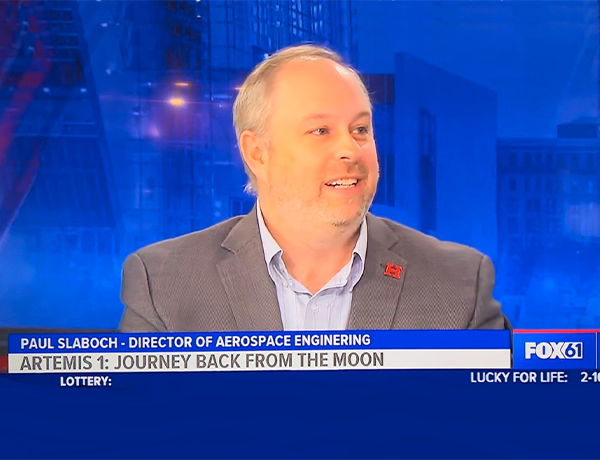
As NASA’s Artemis Orion spacecraft prepared to return from its mission Dec. 11, Professor Paul Slaboch knew what this meant for the future of space exploration. And just a few hours before it successfully landed in the Pacific Ocean, he helped the local community understand, too, in a segment on Fox 61.
Slaboch, associate professor and director of the University of Hartford’s aerospace engineering program in the College of Engineering, Technology and Architecture, visited Fox 61 studios in Hartford to explain Orion’s mission. The spacecraft was sent to space nearly a month ago without people aboard to prepare for astronauts to return to the moon, and to test the structure as well as its operating system. In 2024, it will orbit the moon with people aboard, and by 2025, it will land astronauts on the moon.
Several companies in Connecticut supplied parts to the spacecraft and its systems over the last several years of development. That’s one of the reasons UHart’s aerospace program is so important—it’s developing the next generation of aerospace leaders to work at these companies and contribute to more historic missions in space. It's also the only aerospace program in the state.
Slaboch has worked closely with NASA for many years, and helps students to do the same through his work at UHart. His research is primarily funded by NASA and the NASA CT Space Grant Consortium, and he’s completed two Faculty Fellowships at NASA Glenn Research Center.